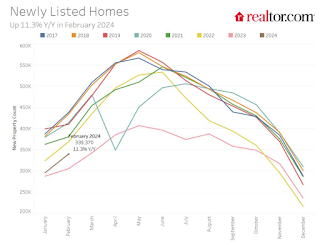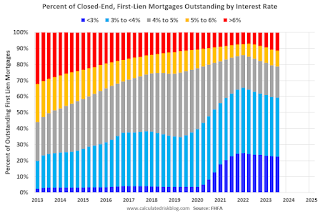Uncategorized
FTX exploiter moved over $17M in ETH in the last 24 hours
A significant portion of the 7,749 ETH, worth roughly $13 million, was directed toward the THORChain router and Railgun contract.
According…

A significant portion of the 7,749 ETH, worth roughly $13 million, was directed toward the THORChain router and Railgun contract.
According to recent information from Spot On Chain, an address linked to the FTX exploit identified as 0x3e9, has conducted transfers exceeding 10,000 Ether (ETH), worth roughly $17 million, across five different addresses since Sept. 30. The addresses had remained inactive for several months before the recent activity.
Within these transactions, a significant portion of 7,749 ETH, equivalent to $13 million, was directed toward the Thorchain router and Railgun contract. Furthermore, the exploiter engaged in a swap involving 2,500 ETH, valued at $4.19 million, converting it into 153.4 tBTC at an average rate of $27,281 per token. This address, which has recently become active, has exhibited noteworthy activity and is anticipated to continue transferring ETH, most likely to Thorchain.
At the time of the initial hack on Saturday, Sept. 30, the approximate losses amounted to nearly 50,000 ETH. This incident occurred just a short while before SBF's criminal trial scheduled for Oct. 2023.
FTX Exploiter 0x3e9 has transferred out a total of 10,250 $ETH ($17.1M) via 5 addresses over the past 24 hours:
— Spot On Chain (@spotonchain) October 1, 2023
- sent 7,749 $ETH ($13M) to the Thorchain router and Railgun contract
- swapped 2,500 $ETH ($4.19M) to 153.4 $tBTC at $27,281 on avg
Notably, the address has been… https://t.co/xzmDz8Vmma pic.twitter.com/4Ykp0zih6G
Nevertheless, these occurrences have generated a significant amount of downward pressure on the ETH price, which currently maintains a level slightly above $1,650. This situation arises as the market anticipates the introduction of Ethereum futures ETFs on Monday, Oct. 2.
FTX co-founder Sam Bankman-Fried, commonly known as SBF, is scheduled to go to trial in October. This comes after his arrest in The Bahamas and subsequent extradition to the United States, marking several months since these events occurred.
The trial is expected to last for six weeks, beginning with the selection of the jury on Oct. 3, followed by the initial court proceedings on Oct. 4. Bankman-Fried faces a total of seven charges connected to fraudulent activities, comprising two substantive charges and five conspiracy charges.
Related: Valkyrie backtracks on Ether futures contract purchases until ETF launch
During the legal proceedings, the FTX founder has consistently pleaded not guilty to all allegations. Despite numerous attempts to secure temporary release, Bankman-Fried continues to be held in custody at the Metropolitan Detention Center. His most recent request for release was denied by Judge Lewis Kaplan, citing concerns about the possibility of him fleeing.
Magazine: Can you trust crypto exchanges after the collapse of FTX?
ethereum crypto etf cryptoUncategorized
Part 1: Current State of the Housing Market; Overview for mid-March 2024
Today, in the Calculated Risk Real Estate Newsletter: Part 1: Current State of the Housing Market; Overview for mid-March 2024
A brief excerpt: This 2-part overview for mid-March provides a snapshot of the current housing market.
I always like to star…

A brief excerpt:
This 2-part overview for mid-March provides a snapshot of the current housing market.There is much more in the article.
I always like to start with inventory, since inventory usually tells the tale!
...
Here is a graph of new listing from Realtor.com’s February 2024 Monthly Housing Market Trends Report showing new listings were up 11.3% year-over-year in February. This is still well below pre-pandemic levels. From Realtor.com:
However, providing a boost to overall inventory, sellers turned out in higher numbers this February as newly listed homes were 11.3% above last year’s levels. This marked the fourth month of increasing listing activity after a 17-month streak of decline.Note the seasonality for new listings. December and January are seasonally the weakest months of the year for new listings, followed by February and November. New listings will be up year-over-year in 2024, but we will have to wait for the March and April data to see how close new listings are to normal levels.
There are always people that need to sell due to the so-called 3 D’s: Death, Divorce, and Disease. Also, in certain times, some homeowners will need to sell due to unemployment or excessive debt (neither is much of an issue right now).
And there are homeowners who want to sell for a number of reasons: upsizing (more babies), downsizing, moving for a new job, or moving to a nicer home or location (move-up buyers). It is some of the “want to sell” group that has been locked in with the golden handcuffs over the last couple of years, since it is financially difficult to move when your current mortgage rate is around 3%, and your new mortgage rate will be in the 6 1/2% to 7% range.
But time is a factor for this “want to sell” group, and eventually some of them will take the plunge. That is probably why we are seeing more new listings now.
Uncategorized
Pharma industry reputation remains steady at a ‘new normal’ after Covid, Harris Poll finds
The pharma industry is hanging on to reputation gains notched during the Covid-19 pandemic. Positive perception of the pharma industry is steady at 45%…

The pharma industry is hanging on to reputation gains notched during the Covid-19 pandemic. Positive perception of the pharma industry is steady at 45% of US respondents in 2023, according to the latest Harris Poll data. That’s exactly the same as the previous year.
Pharma’s highest point was in February 2021 — as Covid vaccines began to roll out — with a 62% positive US perception, and helping the industry land at an average 55% positive sentiment at the end of the year in Harris’ 2021 annual assessment of industries. The pharma industry’s reputation hit its most recent low at 32% in 2019, but it had hovered around 30% for more than a decade prior.
“Pharma has sustained a lot of the gains, now basically one and half times higher than pre-Covid,” said Harris Poll managing director Rob Jekielek. “There is a question mark around how sustained it will be, but right now it feels like a new normal.”
The Harris survey spans 11 global markets and covers 13 industries. Pharma perception is even better abroad, with an average 58% of respondents notching favorable sentiments in 2023, just a slight slip from 60% in each of the two previous years.
Pharma’s solid global reputation puts it in the middle of the pack among international industries, ranking higher than government at 37% positive, insurance at 48%, financial services at 51% and health insurance at 52%. Pharma ranks just behind automotive (62%), manufacturing (63%) and consumer products (63%), although it lags behind leading industries like tech at 75% positive in the first spot, followed by grocery at 67%.
The bright spotlight on the pharma industry during Covid vaccine and drug development boosted its reputation, but Jekielek said there’s maybe an argument to be made that pharma is continuing to develop innovative drugs outside that spotlight.
“When you look at pharma reputation during Covid, you have clear sense of a very dynamic industry working very quickly and getting therapies and products to market. If you’re looking at things happening now, you could argue that pharma still probably doesn’t get enough credit for its advances, for example, in oncology treatments,” he said.
vaccine pandemic covid-19Uncategorized
Q4 Update: Delinquencies, Foreclosures and REO
Today, in the Calculated Risk Real Estate Newsletter: Q4 Update: Delinquencies, Foreclosures and REO
A brief excerpt: I’ve argued repeatedly that we would NOT see a surge in foreclosures that would significantly impact house prices (as happened followi…

A brief excerpt:
I’ve argued repeatedly that we would NOT see a surge in foreclosures that would significantly impact house prices (as happened following the housing bubble). The two key reasons are mortgage lending has been solid, and most homeowners have substantial equity in their homes..There is much more in the article. You can subscribe at https://calculatedrisk.substack.com/ mortgage rates real estate mortgages pandemic interest rates
...
And on mortgage rates, here is some data from the FHFA’s National Mortgage Database showing the distribution of interest rates on closed-end, fixed-rate 1-4 family mortgages outstanding at the end of each quarter since Q1 2013 through Q3 2023 (Q4 2023 data will be released in a two weeks).
This shows the surge in the percent of loans under 3%, and also under 4%, starting in early 2020 as mortgage rates declined sharply during the pandemic. Currently 22.6% of loans are under 3%, 59.4% are under 4%, and 78.7% are under 5%.
With substantial equity, and low mortgage rates (mostly at a fixed rates), few homeowners will have financial difficulties.
-

 Uncategorized3 weeks ago
Uncategorized3 weeks agoAll Of The Elements Are In Place For An Economic Crisis Of Staggering Proportions
-

 International5 days ago
International5 days agoEyePoint poaches medical chief from Apellis; Sandoz CFO, longtime BioNTech exec to retire
-

 Uncategorized4 weeks ago
Uncategorized4 weeks agoCalifornia Counties Could Be Forced To Pay $300 Million To Cover COVID-Era Program
-

 Uncategorized3 weeks ago
Uncategorized3 weeks agoApparel Retailer Express Moving Toward Bankruptcy
-

 Uncategorized4 weeks ago
Uncategorized4 weeks agoIndustrial Production Decreased 0.1% in January
-

 International5 days ago
International5 days agoWalmart launches clever answer to Target’s new membership program
-

 Uncategorized4 weeks ago
Uncategorized4 weeks agoRFK Jr: The Wuhan Cover-Up & The Rise Of The Biowarfare-Industrial Complex
-

 Uncategorized3 weeks ago
Uncategorized3 weeks agoGOP Efforts To Shore Up Election Security In Swing States Face Challenges



















